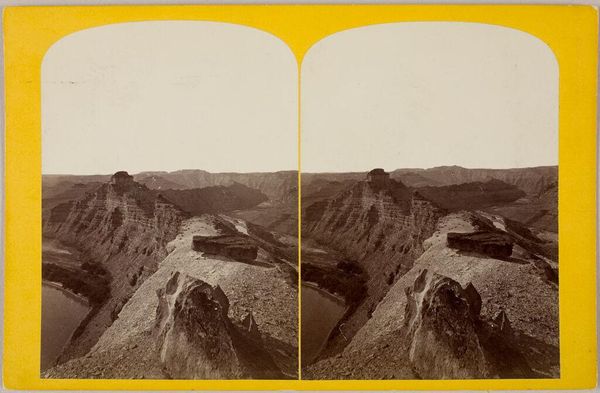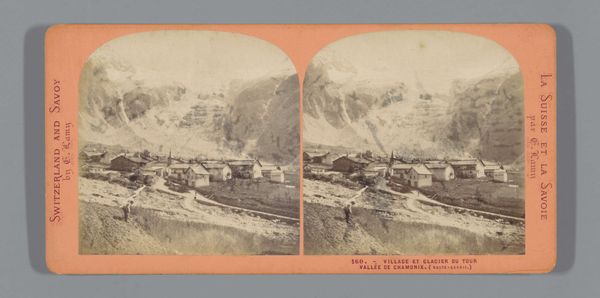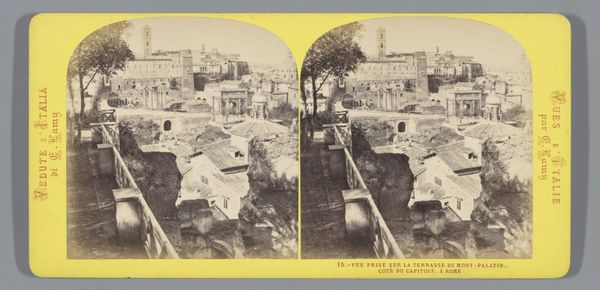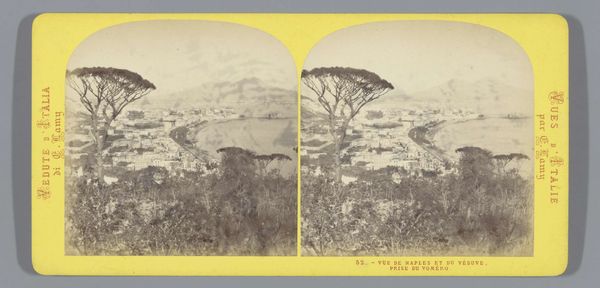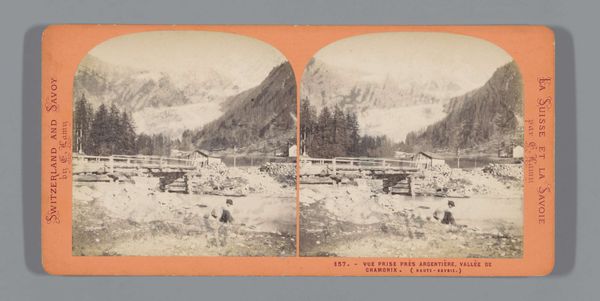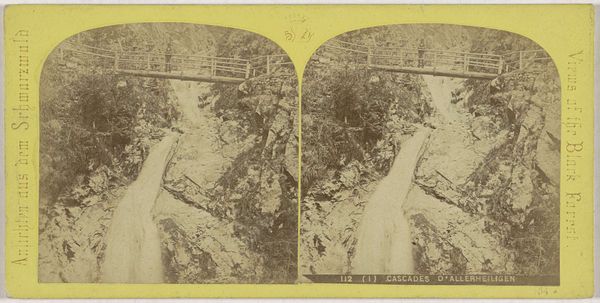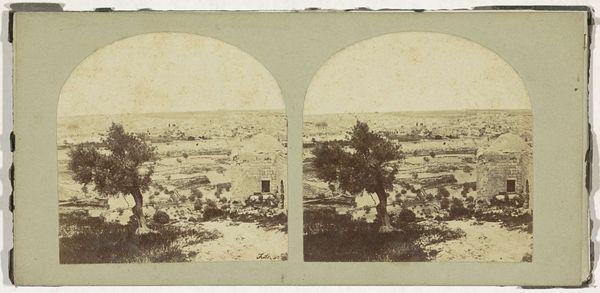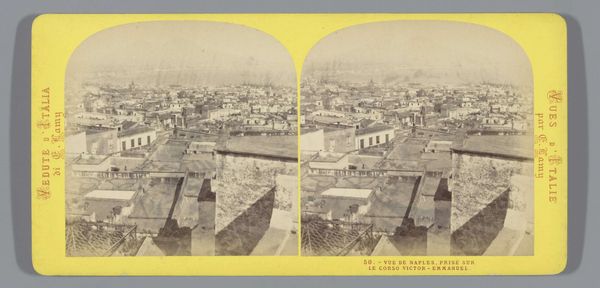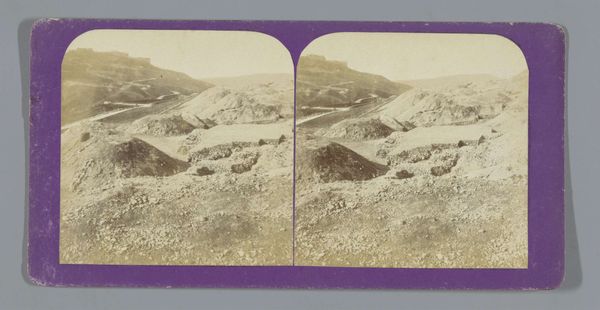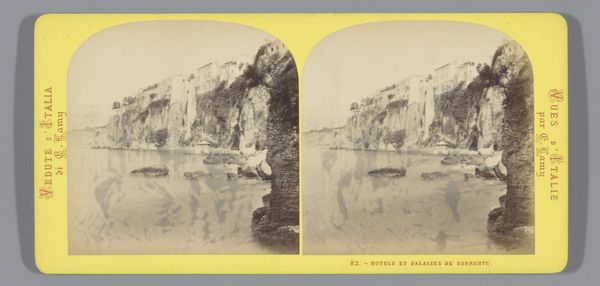
print, photography, gelatin-silver-print
# print
#
landscape
#
photography
#
gelatin-silver-print
Dimensions: height 87 mm, width 178 mm
Copyright: Rijks Museum: Open Domain
Editor: This is a fascinating gelatin-silver print, “Gezicht op Castellammare di Stabia” by Ernest Eléonor Pierre Lamy, made sometime between 1861 and 1878. I’m struck by the detail the artist was able to capture and also its commercial intention to document views for tourism. What stands out to you in this particular piece? Curator: What grabs me is how this image complicates the traditional boundaries of "high art" and "commodity." Photography at this time was rapidly evolving in terms of production. Notice the repetitive nature afforded by the printing process itself – the twin images reflecting a new mode of mechanical reproduction and widespread distribution. Think about the labor involved: the photographer, the darkroom technicians, the distributors. Editor: So, you're suggesting it is less about individual artistry and more about the processes and social structures involved? Curator: Exactly! Consider how this object was consumed. Was it aimed at the wealthy tourist class seeking views to remember? Or were they targeted toward a more middle-class demographic who couldn’t afford to travel but were consuming this vision? It opens questions about consumption and the democratization of landscape representation. Do you see a romantic gaze? Or just labor? Editor: That’s a different lens than I usually use. I hadn't really thought about the labor implications of this photograph itself. Now, I’m intrigued to think more about the economic drivers behind creating it. Curator: Thinking about who created the image and who it was for shifts the whole dynamic. This isn’t just about picturesque scenery, but also about the commodification of that view, turning landscape into product, and that’s tied directly to its materiality. Editor: This has changed how I see it. Thanks for pointing out the labor involved and how it connected to societal shifts at the time. Curator: It highlights how art production isn't detached from the realities of work, industry, and consumer culture. Looking beyond the surface broadens our understanding.
Comments
No comments
Be the first to comment and join the conversation on the ultimate creative platform.

